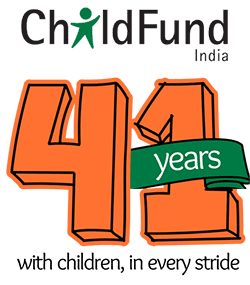In the past few years, humanity has experienced one of its kind pandemic situations, a rise in temperatures, massive losses of biodiversity, frequent technological advances and the accompanying digital divide, conflict situations and so on. All of these have also deeply impacted global literacy efforts and have aggravated inequalities and further deepened the already existing learning crisis. Though all the children have suffered the impact of these rapidly changing global situations in one way or the other, but the intensity and nature of impact has varied for different groups of children and the children who were already vulnerable have experienced the worst pushback affecting the literacy rates.
Then the disparities are also seen within states with 28.9 per cent gap between the best and worst performing state in terms of literacy. It is observed that the states which give importance to education and budget for education better, have better public education systems perform better, this clearly indicates that when the states spend more on education and prioritise the same in their budgeting perform better e.g. – Kerela and Lakshadweep, while those like Bihar, Madhya Pradesh and others who not only have less allocation but also reduced their allocations during the pandemic have low literacy rates.
Now let’s try and explore the other underlying reasons for the disparity in literacy rates in India, but before we explore that let us understand some basics like what is literacy and how is it acquired? ‘Literacy’ has been perceived with different views, beginning with a very limited view that saw signing one’s name and decoding the written text as literacy, then there was view that saw literacy as an ability to read and write with meaning and comprehension. But educationists argue that even that view is limited, literacy needs to be seen as something much complex something that not only serves as a mean to other learning, but also plays an important role in social as well as economic empowerment of the individual and the society. So, as a position paper on Early language and literacy published in the year 2016 puts it – ‘conceptions of literacy need to be seen as building upon oral language skills of learners as well rather than just as a process of encoding and decoding of the script (with or without meaning).’
To acquire literacy, a print-rich environment, a mother tongue-based pedagogy, space for practicing oral language development, availability and use of plethora of good quality children’s literature and starting early, staring with working on emergent literacy are some of the key drivers that must be given focus to.
However, if we have a look at reality, we find that continuity between oral and written languages are largely ignored and not followed in our approaches to help children become literate, we spend very less time on important practices like storytelling, picture reading, focussed and free conversations with the children and want to jump directly to force young children as early as in their pre-school years to start identifying and writing alphabets and numbers, not to forget the horrendous cursive writing drills that the little ones have to go through. Then we have little or no children’s literature available, we make learning meaningless by forcing the standard languages and not allowing the children to use their mother tongue, environments are print deprived – we either have cartoons printed on the walls or some meaningless texts or the walls would be bare, but rarely do we find interesting printed material like stories, poems, riddles and so on available on the walls of the schools. Then there are infrastructure availability issues as the public schools accessible to most of the children coming from the vulnerable sections do not have resources for proper libraries for children’s literature, a print-rich environment and so on.
So, in these situations if we must ensure that the literacy rates improve and the disparity in the same is reduced, we need to:
– Strengthen public education systems with increased per capita budget allocations on education by both union and state governments
– Starting early and staring right: the children need to be supported in their early and emergent literacy skills both at the Anganwadi Centres/schools and at homes through write kind of pedagogical processes which focus more on oral language and connecting oral with written language at the same time giving space to mother tongue-based learning rather than focusing on mundane drills without children being developmentally ready for the same, as this cause more harm than benefits
– Making good quality children literature available in multiple languages and making more and more resources available for having good quality school and community libraries
– Parenting and parental support program for helping parents play their important proactive roles in supporting the acquisition of literacy skills in children
Disclaimer: The views expressed in the article above are those of the authors’ and do not necessarily represent or reflect the views of this publishing house




